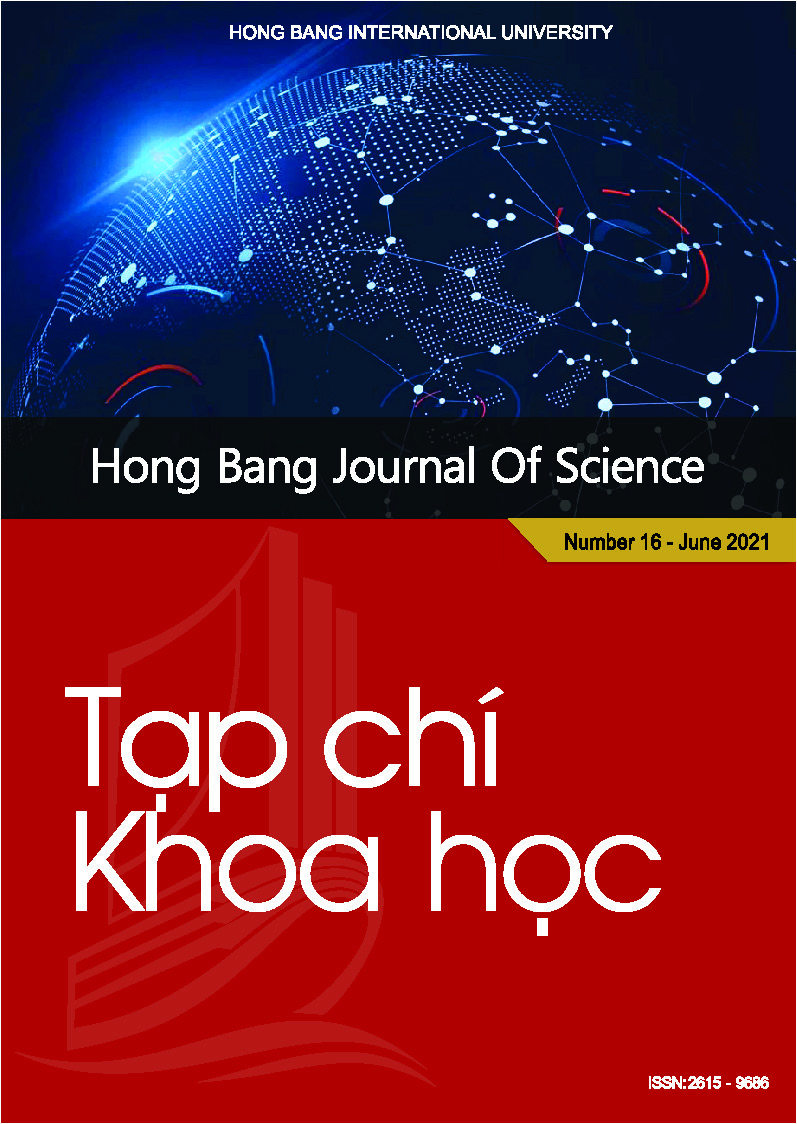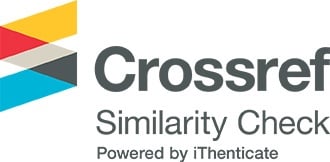Tính toán hiệu suất tổng và hiệu suất đỉnh năng lượng toàn phần của đầu dò NaI(TI) sử dụng mô phỏng Monte Carlo và thực nghiệm
Các tác giả
Từ khóa:
đầu dò NaI(Tl), MCNP5, hiệu suất đỉnh, hiệu suất tổng, hoạt độ phóng xạTóm tắt
Trong công việc này, chúng tôi khảo sát hiệu suất tổng và hiệu suất đỉnh năng lượng toàn phần của đầu dò NaI(Tl) với nguồn chuẩn phát gamma 137Cs (661.7 keV) mà không sử dụng che chắn phông môi trường. Nguồn chuẩn đặt tại các vị trí khác nhau trên trục đối xứng của đầu dò, với các khoảng cách từ 0 mm đến 200 mm, mỗi bước tăng 20 mm. Song song đó, cấu trúc hình học của hệ đo thực nghiệm được mô phỏng Monte Carlo bằng chương trình MCNP5. Một sự phù hợp tốt đã đạt được giữa kết quả tính toán bằng mô phỏng và thực nghiệm, với độ sai biệt trung bình 1.8% đối với hiệu suất đỉnh và 13.2% đối với hiệu suất tổng. Cuối cùng, quy trình phân tích hoạt độ bao gồm đường chuẩn hiệu suất đỉnh mô phỏng và hiệu chỉnh trùng phùng được sử dụng để xác định hoạt độ của các đồng vị phóng xạ trong mẫu tham khảo. Các kết quả kiểm định IAEA đều đạt mức “A - Chấp nhận” chứng minh rằng quy trình phân tích là đáng tin cậy.
Abstract
In this work, we investigated the total efficiency (TE) and full energy peak (FEP) efficiency of a scintillation NaI(Tl) detector. The standard disk source 137Cs (661.7 keV) was measured at different positions on the symmetry axis of the detector with a distance from 0 mm to 200 mm and without used lead shielding. Besides, MCNP5 software was used to simulate the experimental measurement and calculated the TE and the FEP efficiency in the energy range of 46.5 - 1,836.1 keV. A good agreement was obtained between the calculated results by the Monte Carlo simulation and experimental results. The comparisons between experimental measurement and simulation showed that the mean relative deviations were 1.8% and 13.2% for FEP efficiency and TE, respectively. Finally, an advanced analytical procedure was applied to calculate radioactivity in the reference samples. It has consisted of the calibration FEP efficiency curve and the coincidence summing correction factor. The results of the radioactivity using the advanced analytical procedure were received the "A - Accepted" statuses by the IAEA proficiency test.
Tài liệu tham khảo
[1] N. Q. Hung, H. D. Chuong, L. Q. Vuong, T. T. Thanh, and C. Van Tao, “Intercomparison NaI(Tl) and HPGe spectrometry to studies of natural radioactivity on geological samples,” J. Environ. Radioact., Vol. 164, pp. 197-201, 2016. Doi: 10.1016/j.jenvrad.2016.07.035.
[2] H. D. Tam and N. T. M. Le, “An improved method for liquid density measurement using NaI(Tl) detector and low-strength source,” J. Radioanal. Nucl. Chem., Vol. 317, No. 1, pp. 161-168, 2018. Doi: 10.1007/s10967-018-5878-1.
[3] H. D. Chuong, L. T. Ngoc Trang, H. D. Tam, V. H. Nguyen, and T. T. Thanh, “A new approach for determining the thickness of material plate using gamma backscattering method,” NDT E Int., Vol. 113, No. 102281, pp. 1-8, 2020, Doi: 10.1016/j.ndteint.2020.102281.
[4] G. R. Gilmore, Practical Gamma-ray Spectrometry Practical Gamma-ray Spec-trometry, 2nd ed. 2008.
[5] X-5 Monte Carlo Team, “MCNP - A General Monte Carlo N-Particle Transport Code, Version 5, Volume I: Overview and Theory, LA-UR-03-1987.,” Los Alamos Natl. Lab., Vol. I: Overvie, No. LA-UR-03-1987, 2003.
[6] S. Agostinelli et al., “GEANT4 - A simulation toolkit,” Nucl. Instruments Methods Phys. Res. A, Vol. 506, No. 3, pp. 250-303, 2003. Doi: 10.1016/S0168-9002(03)01368-8.
[7] S. Yalcin, O. Gurler, G. Kaynak, and O. Gundogdu, “Calculation of total counting efficiency of a NaI(Tl) detector by hybrid Monte-Carlo method for point and disk sources,” Appl. Radiat. Isot., Vol. 65, No. 10, pp. 1179-1186, 2007. Doi: 10.1016/j.apradiso.2007.05.003.
[8] K. Amgarou, C. Domingo, T. Bouassoule, and F. Fernández, “Monte Carlo simulation of the NaI(Tl) detector response to measure gold activated foils,” Nucl. Instruments Methods Phys. Res. B, Vol. 267, No. 17, pp. 2944-2951, 2009. Doi: 10.1016/j.nimb.2009.06.087.
[9] S. Baccouche, D. Al-Azmi, N. Karunakara, and A. Trabelsi, “Application of the Monte Carlo method for the efficiency calibration of CsI and NaI detectors for gamma-ray measurements from terrestrial samples,” Appl. Radiat. Isot., Vol. 70, No. 1, pp. 227-232, 2012. Doi: 10.1016/j.apradiso.2011.07.008.
[10] C. V. Tao, H. D. Tam, T. V. Danh, T. T. Thanh, “Determination of total and intrinsic efficiencies of a 3” x 3” NaI(Tl) detector for a thin disc source,” J. Sci. Ho Chi Minh City Univ. Educ., No. 58, pp. 114-122, 2014.
[11] H. O. Tekin, “MCNP-X Monte Carlo Code Application for Mass Attenuation Coefficients of Concrete at Different Energies by Modeling 3 × 3 Inch NaI(Tl) Detector and Comparison with XCOM and Monte Carlo Data,” Sci. Technol. Nucl. Install., Vol. 2016, 2016. Doi: 10.1155/2016/6547318.
[12] T. T. Thanh, L. B. Tran, H. D. Tam, M. T. Quang, T. V. Ton, H. D. Chuong, C. V. Tao, “Validation of radioactive isotope activity measurement in homogeneous waste drum using Monte Carlo codes,” Kerntechnik, Vol. 82, No. 3, pp. 344-348, 2017. Doi: 10.3139/124.110631.
[13] GAMMA RAD, “https://www.amptek.com
/products/gamma-ray-products/gamma-rad5-gamma-ray-detection-system”, Accepted April-2020.
[14] M. C. Lépy, “Presentation of the COLEGRAM software,” Note tech. LNHB 04/26, 2004.
[15] H. D. Tam, H. D. Chuong, T. T. Thanh, and C. Van Tao, “A study of the effect of Al2O3 reflector on response function of NaI(Tl) detector,” Radiat. Phys. Chem., pp. 88-93, 2016. Doi: 10.1016/j.radphyschem.2016.03
.020.
[16] H. X. Shi, B. X. Chen, T. Z. Li, and D. Yun, “Precise Monte Carlo simulation of gamma-ray response functions for an NaI(Tl) detector,” Appl. Radiat. Isot., Vol. 57, No. 4, pp. 517-524, 2002. Doi: 10.1016/S0969-8043(02)00140-9.
[17] R. Venkataraman, S. Croft, and W. R. Russ, “Calculation of peak-to-total ratios for high purity germanium detectors using Monte-Carlo modeling,” J. Radioanal. Nucl. Chem., Vol. 264, No. 1, pp. 183-191, 2005. Doi: 10.1007/s10967-005-0692-y.
[18] GUM, “Evaluation of Measurement Data - Guide to the Expression of Uncertainty in Measurement,” BIPM, vol. JCGM 100:2, 2008.
[19] R. L. Heath, Scintillation spectrometry Gamma-ray spectrum catalogue, 2nd ed. 1964.
[20] M. Belluscio, R. De Leo, A. Pantaleo, and A. Vox, “Efficiencies and response functions of NaI(Tl) crystals for gamma rays from thick disk sources,” Nucl. Instruments Methods, Vol. 118, No. 2, pp. 553-563, 1974. Doi: 10.1016/0029-554X(74)90666-1.
[21] T. Nakamura, “Monte Carlo calculation of efficiencies and response functions of NaI(Tl) crystals for thick disk gamma-ray sources and its application to Ge(Li) detectors,” Nucl. Instruments Methods, Vol. 105, No. 1, pp. 77-89, 1972. Doi: 10.1016/0029-554X(72)90496-X.
[22] A. Cesana and M. Terrani, “Gamma-ray Activity Determination in Large Volume Samples with a Ge-Li Detector,” Anal. Chem., Vol. 49, No. 8, pp. 1156-1159, 1977. Doi: 10.1021/ac50016a024.
[23] M. C. Lépy, M. Bé, F. Piton “ETNA (Efficiency Transfer for Nuclide Activity Measurements): Software for Efficiency Transfer and Coincidence Summing Corrections in Gamma-ray Spectrometry,” Note Tech. LNHB/01/09/A, 2004.
[24] T. T. Thanh, L. Q. Vuong, P. L. Ho, H. D. Chuong, V. H. Nguyen, and C. Van Tao, “Validation of an advanced analytical procedure applied to the measurement of environmental radioactivity,” J. Environ. Radioact., Vol. 184-185, pp. 109-113, 2018. Doi: 10.1016/j.jenvrad.2017.12.020.
[25] I. Osvath, C. Galdino, P. McGinnity, M. Pham “Update on IAEA proficiency test exercises,” HELCOM MORS Annu. Meet. IAEA Environ. Lab. Monaco, 2020.
Tải xuống
Tải xuống: 84







